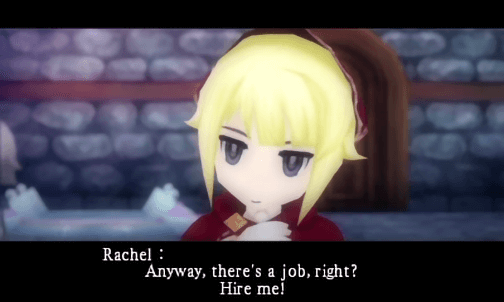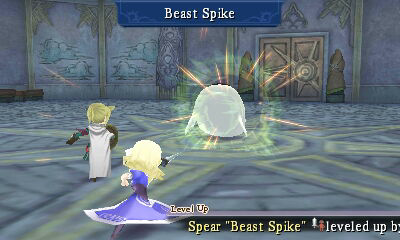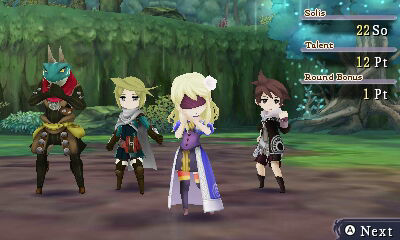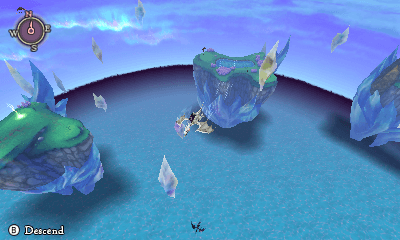
The Alliance Alive Review
When FuRyu originally made its plans for The Legend of Legacy, it aimed to bring back the 'golden days' of RPGs by drawing inspiration from the classics, such as from Square Enix’s SaGa series of titles. The development team even brought on Kyoji Koizumi as lead designer - a Square Enix veteran who has worked on a handful of SaGa games. Ultimately, while I was fond of several of the elements The Legend of Legacy was aiming for, it fell just a little short of the mark.
The Alliance Alive is essentially a sequel to The Legend of Legacy, even if it features a brand new world and set of characters. It clearly has a very similar visual style, and the turn-based combat system shares many of the same components as its predecessor. However, it's plain to see FuRyu heard the reception of their previous title and wanted to address it where they could.
When The Legend of Legacy was released back in 2015, some were critical of its minimalistic story elements. Besides a very basic establishment of a setting and some baseline character motivations, the game was not a story-driven experience in any sense. I personally didn’t take too much issue with that decision, but The Alliance Alive attempts to change this up by bringing on Yoshitaka Murayama (creator of the Suikoden series) to handle the script.

Indeed, The Alliance Alive has a much stronger narrative focus than its foregoer. You can expect significantly more dialogue, a good handful of cutscenes, and a more plot-centric motivation behind the gameplay systems. Characters are much more well defined, with more concrete personalities and interactions, although it is worth noting that the game does not have voice-acting.
The story opens in the town of Svalna in a land that is under a perpetual rainstorm. In this world are humans, beastfolk, and daemons. In what might be a slight twist of expectations, humans actually play the role of lesser beings in this world, subservient to beastfolk who aren’t shy about their maltreatment of the ‘monkey’ humans. Daemons are far rarer, only appearing occasionally with power over just about everything else. As you progress through the game, you learn more about the world and how the hierarchy between daemons, beastfolk, and humans came to be.
While some of the characters are enjoyable on a base-level, I feel the new storyline focus doesn’t actually add much to the game. Major plot beats play out in a manner that is predictable; you’ve probably seen a very similar villain, motivation, and conflict once or four times before. That's not to say anything about the story elements are egregiously poor or anything like that, but it’s nothing more than average. If you need some story motivation to keep you engaged, there is something there, at least.

SaGa inspirations lead The Alliance Alive to play a little differently than your traditional RPG. Firstly, rather than characters having a level assigned by a number, the focus is instead placed on stats. As the player progresses through the game, characters will occasionally gain improvements to their HP and SP pools after a battle. Combat skills are also tied to weapon types, not characters. For example, any character using a sword will have access to the same potential set of abilities. Abilities get stronger through exercised use, too, meaning the more often you use a certain skill in battle, the more potent it becomes.
A key element of The Alliance Alive's mechanics is that of stances and formations. These are mostly direct carryovers from The Legend of Legacy, where each character is placed into either an Attack, Support, or Guard stance. You can also place characters into one of three rows along with their stance, which affects their damage input/output and how often they are targeted. While the previous title also had stances and formations, the player is given a tad more control this time around in how they organize their squad. It's also important to note you can now have up to five characters participate in battle instead of three.
One big addition is a fast-forward option in combat. More and more RPGs seem to be including these sorts of quality-of-life features, and this is something The Legend of Legacy lacked. It's a welcome inclusion, for sure. Another criticism was that the previous game was considered to be fairly challenging throughout, or at least more difficult than some expected it to be.
Well, you will be happy to know that FuRyu heard this criticism because The Alliance Alive tones the challenge down considerably. In fact, the first 6-8 hours of the game or so are actually a bit brainless on this front. During these opening hours, you jump between three separate parties before circumstances have the game's nine main characters eventually teaming up. Within this span, there's not much you can't breeze through by simply having all characters use the Attack command at all times.
This gets a little bit better when you reach the point where the whole map opens up to you. When you get the freedom to explore anywhere, you'll sometimes run into monsters that are much tougher than the ones you are expected to take on at that point, so there's always the chance you'll dive into a brutal fight. As long as you stick to the places you are supposed to go in the order you are meant to, it's more than manageable.

The most demanding aspect of the game is a sequence right around the midpoint where the player is forced to split up the cast into three separate parties, each taking on waves of enemies. At this point, you probably found a team and rhythm you've become accustomed to and having to switch it up so suddenly puts a damper on things. This sequence is also followed by one of the toughest boss encounters in the adventure.
After this mid-story difficulty spike, the rest of the game is considerably smoother, though not the same mindless experiences found in the first few hours. You must have some understanding of the formation and stance systems to make your way through. By dedicating one character to defense and another to healing, I didn't have any trouble up to the end credits. Unfortunately, battles can become somewhat stale, as the gameplay systems in place largely gear themselves towards routine strategies and patterns. You will always have your attackers and defenders performing the same actions in each encounter because it's the most effective method of approachment. Certain characters are clearly more suited to certain tasks than others, so the level of party flexibility is also pretty limited.
The cartographer system from The Legend of Legacy has been removed completely, replaced with a more typical world map your party traverses. As such, the map layouts and dungeon puzzles remain simple throughout; there's nothing neither special or out of the ordinary here.
One new subsystem in The Alliance Alive is Guilds. Throughout the journey, you will encounter five distinct guilds that offer small benefits to your party. These come in essentially two forms: items or spells you can purchase, or semi-random effects in combat. Each of the 5 guilds places towers on the world map, and if you are in the range of one of these towers, you can expect the occasional assistance while you are battling. One of the guilds, for example, tries to stun the enemy, while another tries to lower their defense stats. The more towers you are near, the more likely their assistance will take effect during battle.

There is also a simple recruiting system in place in The Alliance Alive. After certain story events, you can speak to various NPCs and have them join one of the game's guilds. Depending on which one you send them to, the types of bonuses they offer will improve. You can also find spots on the world map where you are able to place more towers for each guild, allowing the aforementioned in-battle effects to have a wider area of influence.
All that said, I didn't actually explore this recruiting system too much. The items and spells they offered outside of combat didn't seem worth it, and I managed just fine in battle without placing towers on the map. It's a simple system that doesn't bog down the main game too much, though I feel it's not as interesting or as useful as it could be.
The Alliance Alive tries to make improvements on its predecessor, but only to a certain level of success. It still gets bogged down by a somewhat repetitive gameplay loop, and the expanded story focus is merely adequate. However, the game can be comforting if you are longing for an RPG that feels like the ones of the days past.